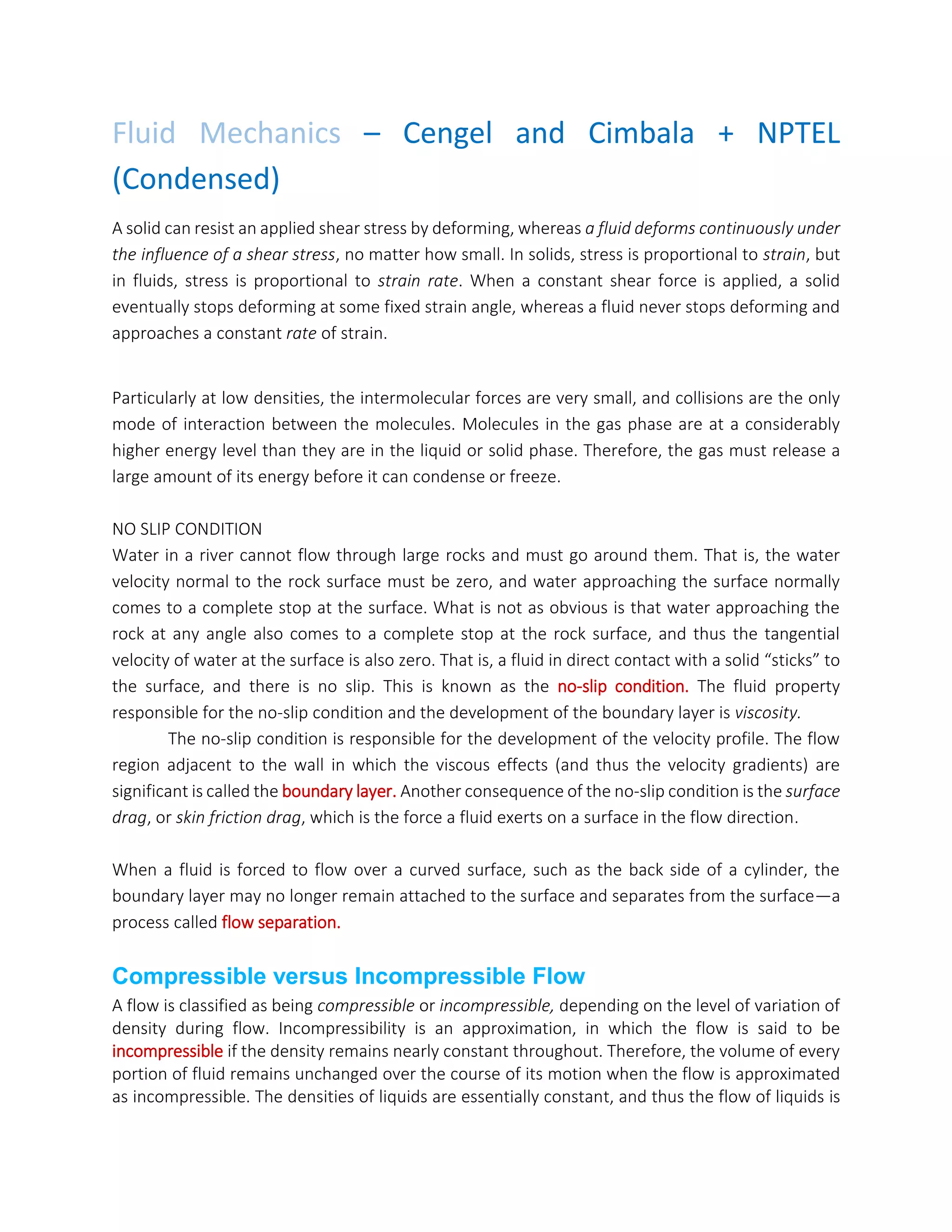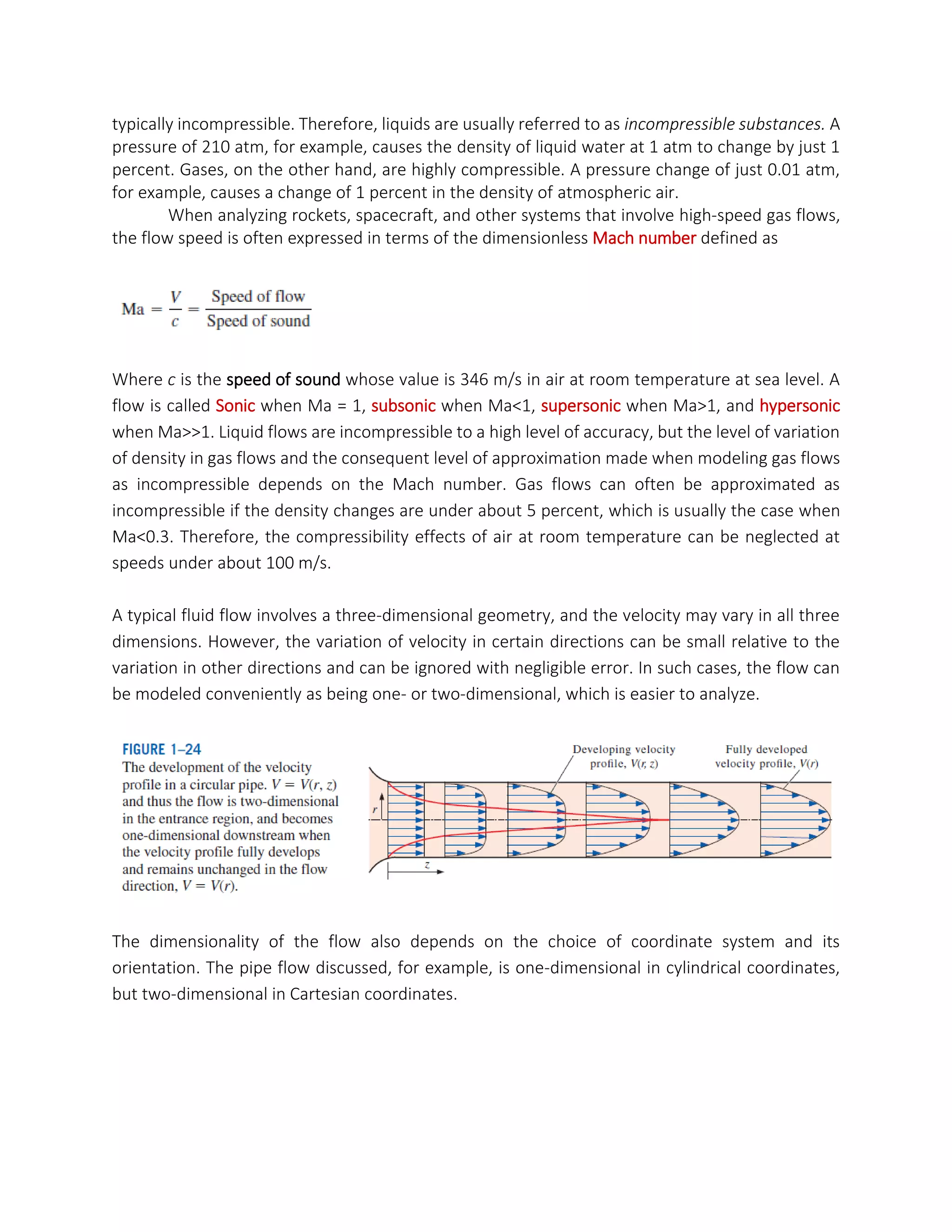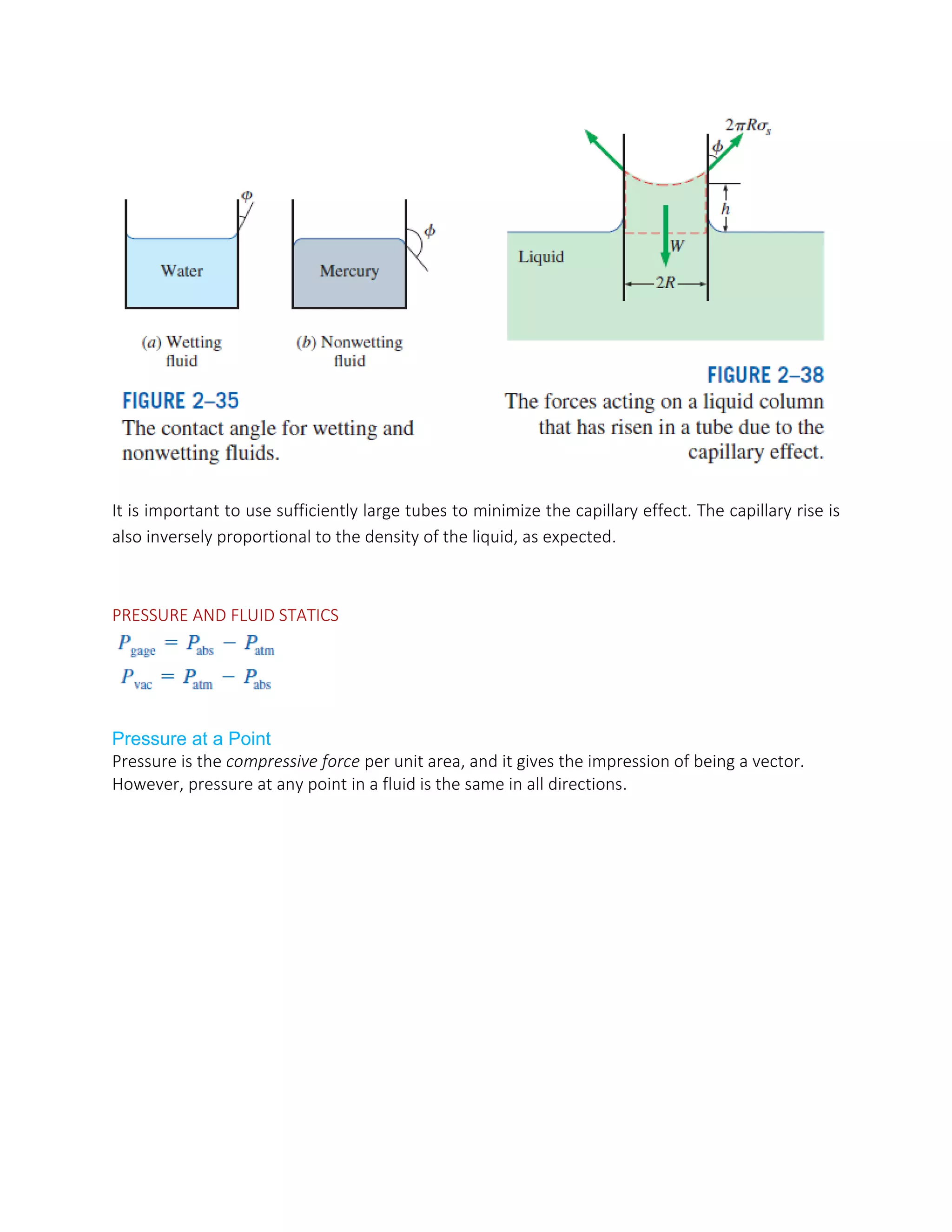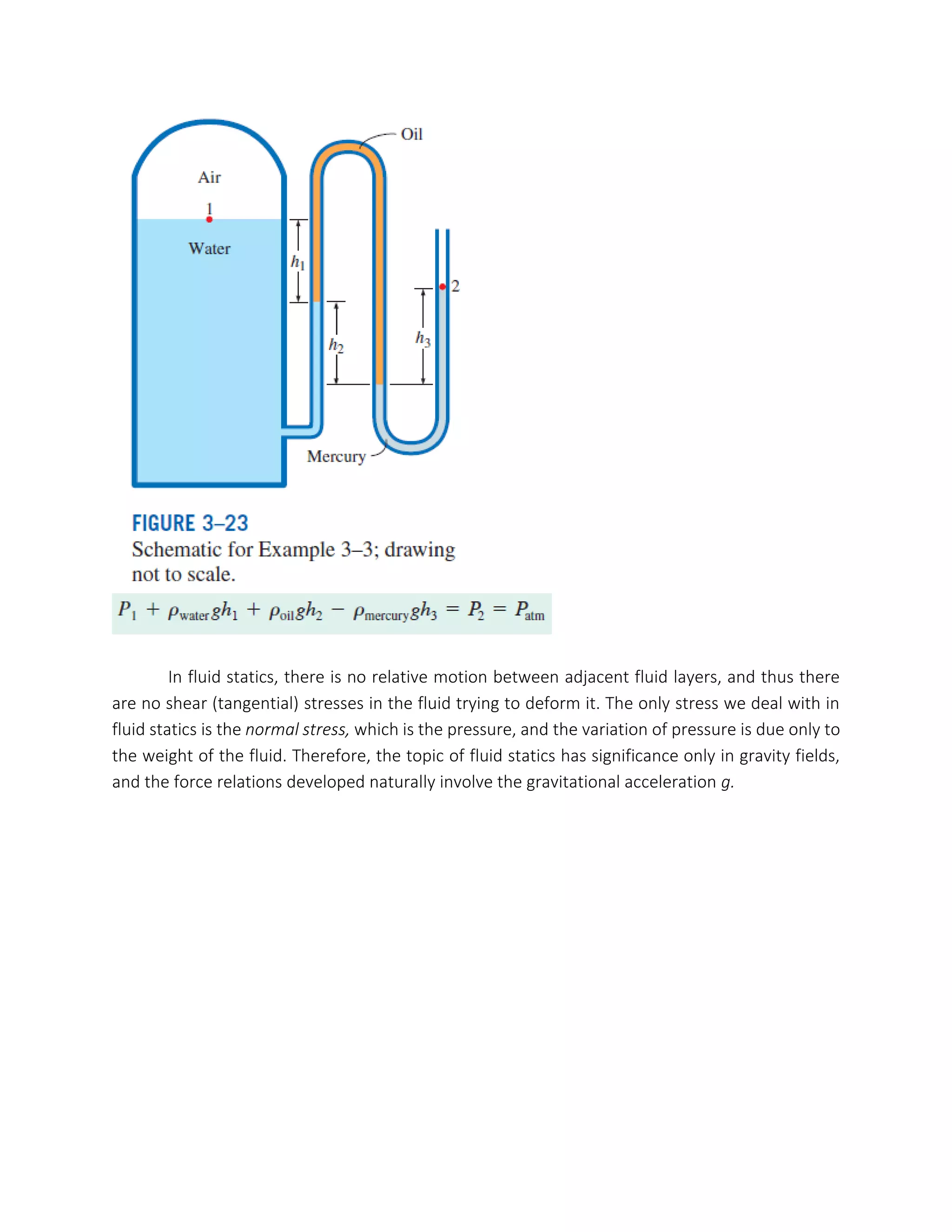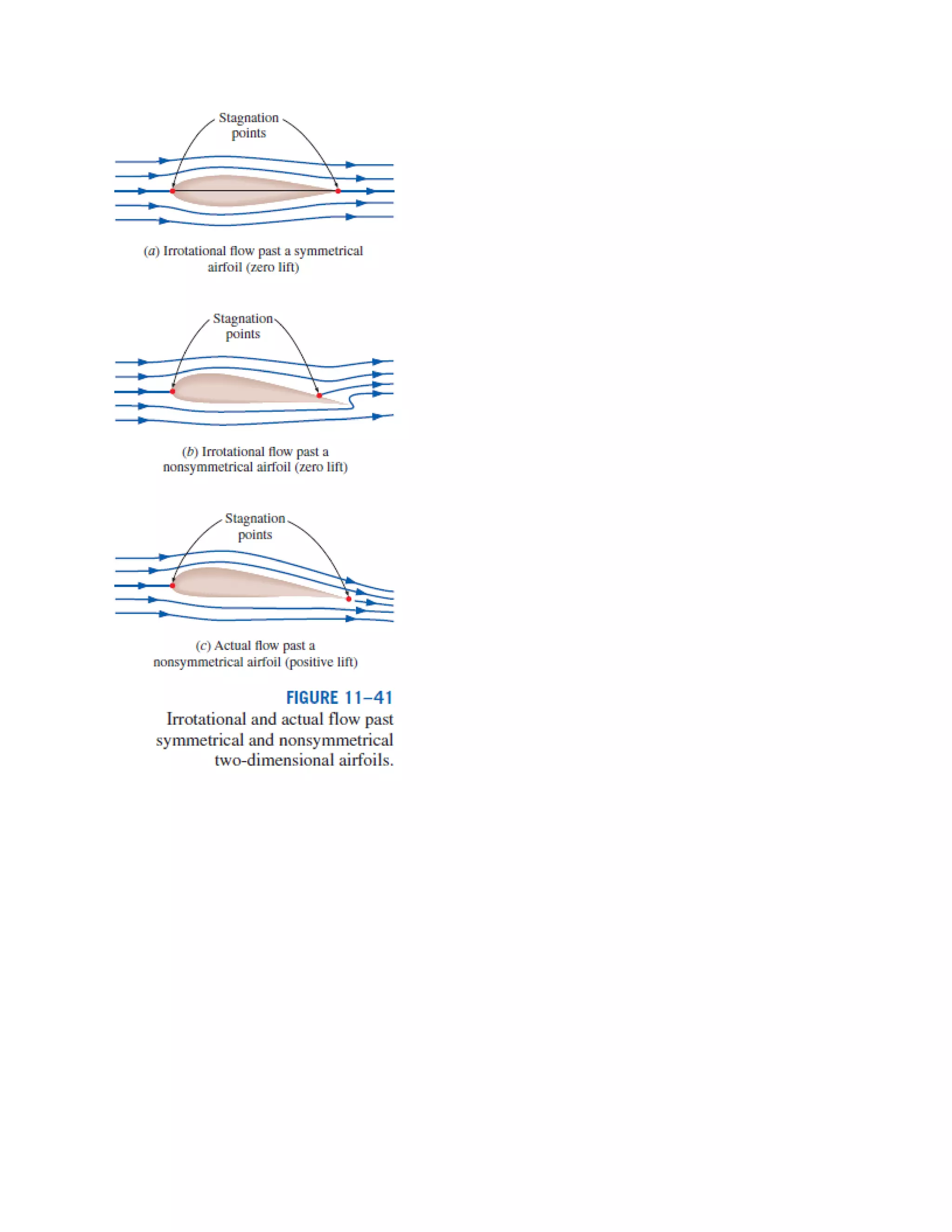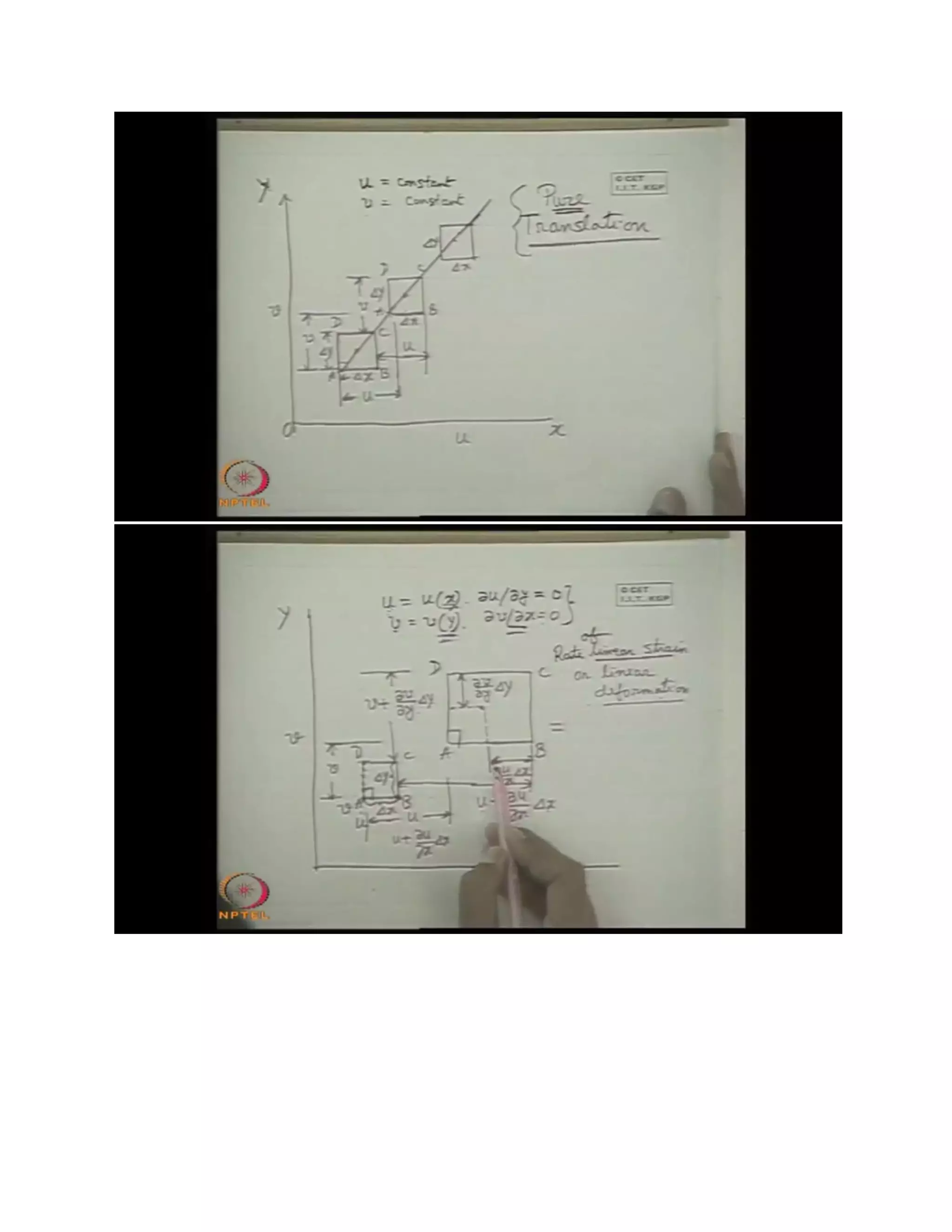1. Fluids deform continuously under any applied shear stress and never stop deforming, unlike solids which will stop deforming after reaching a fixed strain.
2. Gases have much lower intermolecular forces than liquids or solids, requiring a large amount of energy release during phase changes between gas and liquid or solid.
3. The no-slip condition means that fluid velocity is zero at any solid boundary, due to viscosity, resulting in boundary layers and surface drag.
